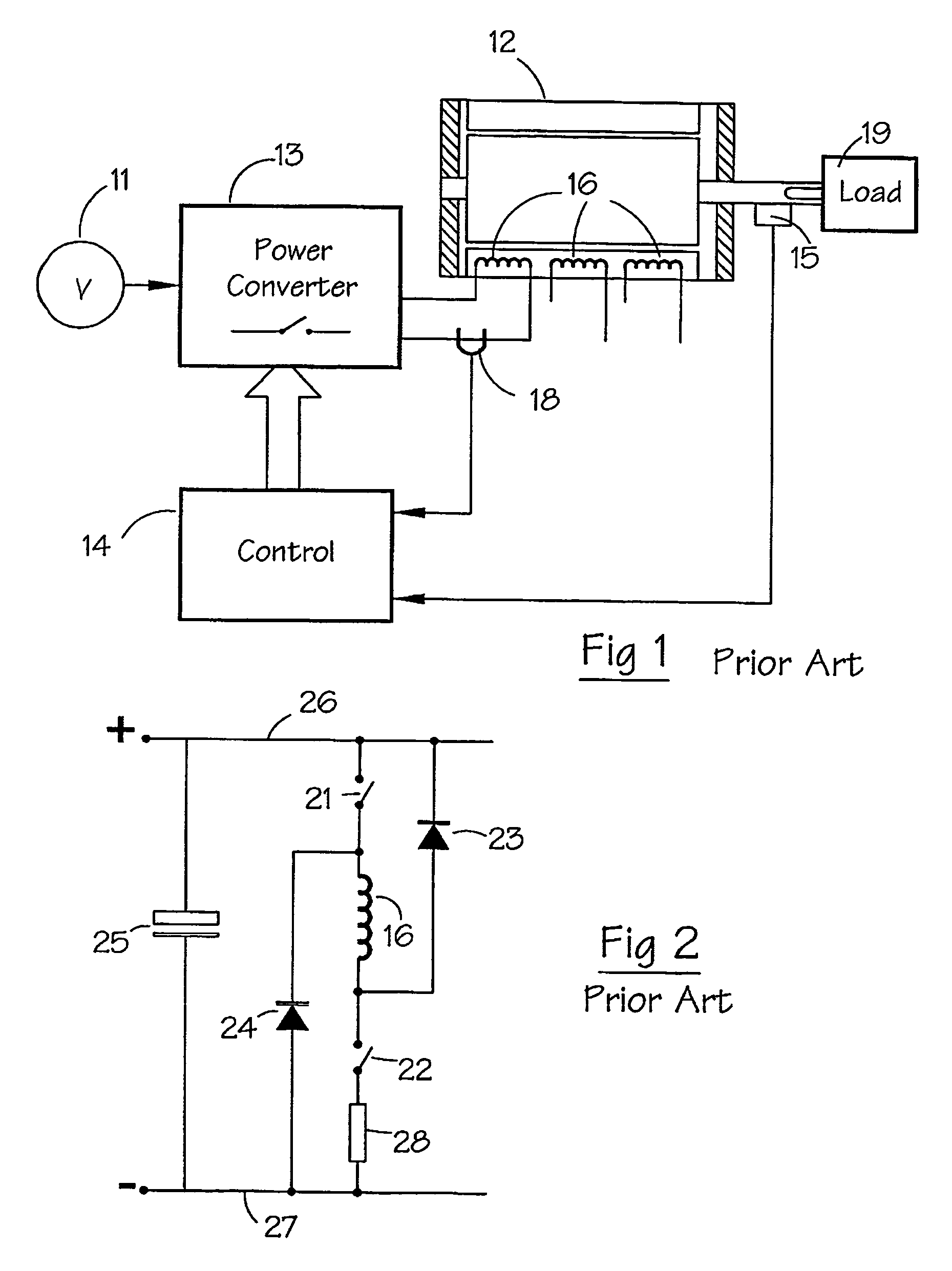Operation of an electrical machine
a polyphase, electrical machine technology, applied in the direction of electronic commutators, single motor speed/torque control, synchronous motor starters, etc., can solve the problems of increasing the overall assembly cost, adding extra electrical connections to the machine, and potential sources of unreliability, so as to reduce the duty of at least one phase
- Summary
- Abstract
- Description
- Claims
- Application Information
AI Technical Summary
Benefits of technology
Problems solved by technology
Method used
Image
Examples
Embodiment Construction
[0042]The illustrative embodiment to be described uses a 3-phase switched reluctance drive in the motoring mode, but any phase number greater than one could be used, with the drive in either motoring or generating mode.
[0043]When a balanced, polyphase electrical machine is operating in steady state, all of the phases contribute equally to the output of the machine and the input phase quantities are equal. For example, if the machine is in the motoring mode then the output is mechanical power and the input is balanced phase currents. If the machine is operating in the generating mode, the output is electrical power in the form of balanced phase currents and the input is mechanical power to the rotor. In these cases, the machine is said to share the duty of providing the demanded output equally among the phases.
[0044]FIG. 6 shows the measured phase current waveforms of an exemplary 3-phase switched reluctance machine operating near its full load of 22 kW at 4000 rev / min. As would be e...
PUM
 Login to View More
Login to View More Abstract
Description
Claims
Application Information
 Login to View More
Login to View More - R&D
- Intellectual Property
- Life Sciences
- Materials
- Tech Scout
- Unparalleled Data Quality
- Higher Quality Content
- 60% Fewer Hallucinations
Browse by: Latest US Patents, China's latest patents, Technical Efficacy Thesaurus, Application Domain, Technology Topic, Popular Technical Reports.
© 2025 PatSnap. All rights reserved.Legal|Privacy policy|Modern Slavery Act Transparency Statement|Sitemap|About US| Contact US: help@patsnap.com



